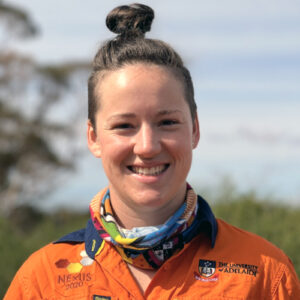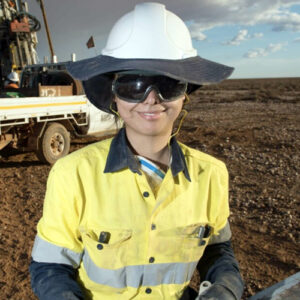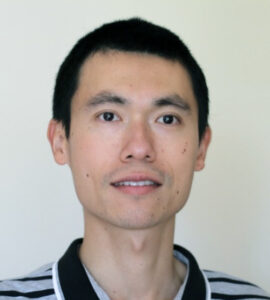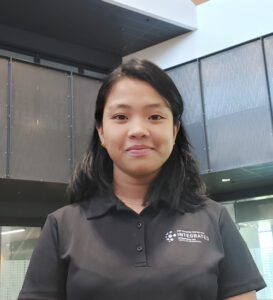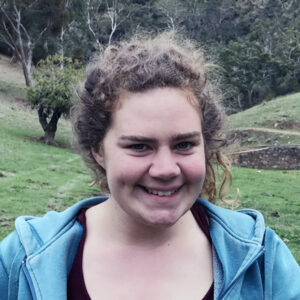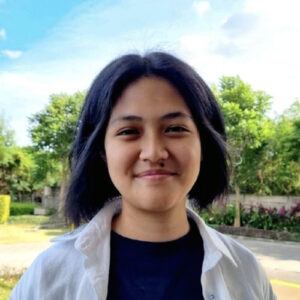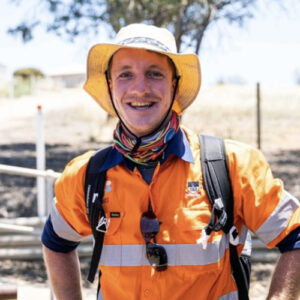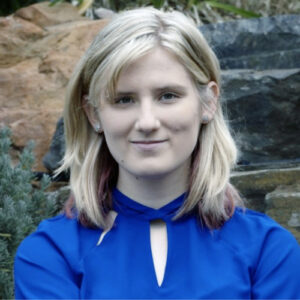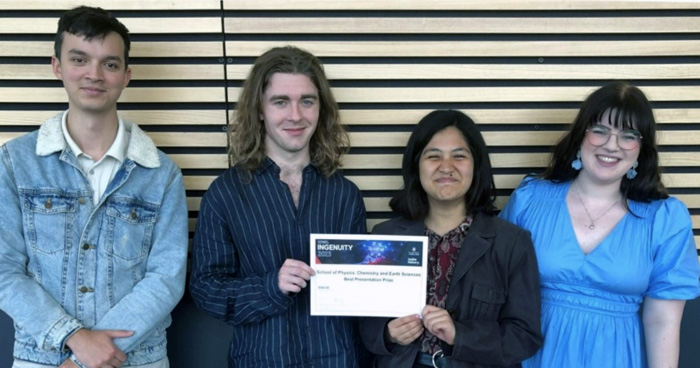SAEMC is an annual collaborative event that brings together both the exploration and mining industries in South Australia.
Posters
Posters 2023
Sponsored by: AusIMM
Prizes
1: Best Honours
2: Best PhD
3: Peoples Choice for Best Poster
Judging panel
Peter Hill
Peter is a South Australian geologist and a Director of the Australian Institute of Geoscientists (AIG). Peter contributes to the SA geology community by running the very successful monthly SA AIG Geopub events, engaging with industry, students and research.
Janine Herzig
Janine is the Convenor of the MetPlant Conference Series, former NED of Base Resources & former Director & Past President of the AusIMM. Janine is active in many industry voluntary roles including: Honorary Secretary of the SA & NT Divisions of ATSE – the Australian Academy of Technological Sciences & Engineering; Executive President & Non-Executive Director of CEEC International –Coalition for Minerals Efficiency – providing leadership for its Advanced Energy Curves & current flagship Global Water Initiative.
Andrew Proudman
Andrew Proudman is a Principal Consultant at AMC Consultants. Andrew has 35 years of accumulated mineral industry experience in geology, geotechnical engineering and mineral asset valuations in both operational and consulting roles.
SAEMC Poster Presentation
Poster 1
Justine Flahaut
Abstract: Scapolite from the Mount Isa region in northern Australia exhibits significant halogen content, primarily chlorine, due to the complex magmatic-metamorphic fluids history within the area. Valuable metal transport and precipitation are significantly facilitated by halogens within the fluids. Understanding the role of magmatic or metamorphic fluids in metal transport is important for optimizing exploration strategies that target specific zones of fluid flow or fluid sources. Therefore, scapolite represents a valuable tool to investigate fine-scale halogen distribution as well as their behaviour during metamorphism and contributes to the global understanding of associated metallogenic processes.
Bio: Justine is originally from France and is currently a first-year PhD student at the University of South Australia. Her research focuses on developing rapid and cutting-edge techniques to directly analyse the composition of fluids, enabling regional-scale characterisation and understanding of fluid systems. The project is part of the MinEx CRC.
Poster 2
Ivan Gutierrez Agramont
Title: Sensitivity analysis of Data Driven Machine Learning algorithms for Laser Induced Breakdown Spectroscopy (LIBS) data
Ivan Gutierrez Agramont, Ben van der Hoek, Caroline Tiddy, Lequn Zhang, Neil Francis, Steven Tassios
Abstract: This study presents a sensitivity analysis of Data-Driven Machine Learning (DDML) algorithms applied to Laser Induced Breakdown Spectroscopy (LIBS) data in the context of the development of a tool for rapid downhole geochemical analysis in a mineral exploration environment. LIBS is being used in the tool development as it offers a method for rapid elemental analysis of materials in harsh environments with no required sample preparation. However, a challenge with rapid data collection methods is that large volumes of data are produced, meaning automated methods to interpret the datasets generated are needed.
The focus here is on understanding the capability of DDML algorithms to predict elemental compositions from the spectra produced by LIBS. DDML regression models, including Lasso, Neural Network Regression, Decision Trees Regression, Random Forest Regression and Linear Regression, were trained using LIBS data collected from a set of known mixtures of MgO and NaCl. Sensitivity of the number and compositional representativity of training data were tested by using different mixtures ratios and different number of captures for training/validation as well as prediction for each algorithm, as these are known to be limiting steps in using DDML algorithms in analysis of LIBS (and other) datasets. Values predicted from the DDML models were evaluated against laboratory analysis (i.e., measured versus actual) for each mixture, and statistical methods and learning curves were used to highlight model-specific biases and variance patterns.
Preliminary results indicate varying degrees of prediction accuracy among the models. When using an ‘ideal’ training dataset (i.e., excessive number of captures with maximum compositional representativity), the Ridge Regression and Decision Tree Regressor had the best performance with an R2 for Mg of 0.9603 and 0.9415 respectively for validation. After those algorithms were used for prediction with unseen data (data not used in the training/validation process), the R2 for Mg using Ridge Regression is 0.9666 and Decision Tree is 0.9501. When the same algorithm is used for prediction using a single LIBS spectrum of unseen data, the result is a bit worse than the training/validation process with an R2 for Mg of 0.9640 for Ridge and 0.9399 for Decision Tree. However, when the data is smoothed by averaging the LIBS spectra for every 25 laser shots before prediction, the results are improved. The same behaviour is observed for the Na under the same analysis. Further analysis was done based on number of data as well as impact of compositional representativity.
The outcomes of this study will be used to inform the efficacy of DDML algorithms for LIBS data interpretation, revealing their potential and areas of improvement for future applications.
Acknowledgements: The work has been supported by the Mineral Exploration Cooperative Research Centre whose activities are funded by the Australian Government’s Cooperative Research Centre Program. This is MinEx CRC Document
Bio: Ivan is originally from Bolivia, has a bachelor in Systems Engineering and a Masters in Telecommunications engineering, currently is a PhD candidate studying at the University of South Australia (UniSA). His research focus is on Generating Synthetic Data from LIBS (Laser Induced Breakdown Spectroscopy) for Training Machine Learning or Deep Learning Algorithms. The research is part of Project 3 in MinEx CRC.
Before coming to Australia, Ivan worked for a Los Angeles Based IoT RFID company in the Digital Signal Processing engineering group working with RF data and Machine Learning Algorithm creation for RFID usage under different scenarios like industrial, retail and supply chain.
His interests in technology are in AI, Data Visualization, Cybersecurity, IoT, Infrastructure, DevOps, Ansible, Python, C++ and Linux Operating Systems.
Poster 3 & 4
Hamid Bizhanikalatehahmad
Abstract 1: The widespread application of electrical resistivity tomography (ERT) for mine detection emphasizes the significance of interpreting data through inversion. This study focuses on 2D inversion of ERT data, utilizing the integral method with regularization for minimal length. Accuracy assessment employed synthetic and real data. Synthetic data featured three resistive and one conductive body in a uniform ground, with 5% random noise. Comparative analysis against RES2DINV software affirmed the proposed integral method’s validity. Application to copper mine data validated its efficacy against RES2DINV. This research showcases the integral method’s proficiency in interpreting synthetic and real data for mine detection.
Abstract 2: Geo-electrical methods, particularly electrical resistivity tomography (ERT) and induced polarization (IP), play a vital role in geophysics by leveraging earth’s electric fields and material properties. IP is especially effective for identifying sulphide and metal minerals. ERT, with specific properties inherent to rocks and formations, aids in structural and geological assessment. This study employs ERT and IP techniques to detect lead and zinc deposits. Initial rectangular prospecting identifies surface anomalies. Subsequent survey lines, aligned with outcrop extension, use dipole-dipole arrangement. Data processing and modelling yield anomaly mapping. Locations congruent with geological data and initial results suggest drilling targets.
Bio: I graduated from the Shahrood University of Technology in 2020, focusing on modeling and interpretation of induced polarization (IP) and electrical resistivity tomography (ERT) datasets for exploration of Pb-Zn deposit. As a Ph.D. student, I joined the Earth Sciences Department of the University of Adelaide in 2023, where I am doing my PhD on the subject of “Investigating crustal anomalies in the Curnamona-Mundi Mundi region using an integrated geophysical approach.”
Poster 5
David Baker
Abstract: Magnetotellurics is a geophysical technique that can be used in combination with other datasets to image the 3D structure of the lithosphere in terms of its electrical resistivity. As resistivity is determined by the deep geochemical signatures associated with fluid and melt fluxes, such models can be used for predictive mineralisation. The Australian Lithospheric Architecture Magnetotelluric Project (AusLAMP) provides a framework of grids of long-period MT sites spaced 0.5 degrees to provide regional coverage of major tectonic provinces and cratons in Australia.
The my PhD research undertakes large 3D inversions of AusLAMP data, along with legacy MT data sets with higher spatial resolution and increased bandwidth. These 3D inversions are integrated with national-scale potential field data, and correlated against seismic reflection sections, airborne EM maps, and other higher resolution data sets. The initial models are of an area covering the Musgrave Province and overlapping with the margins of the Northern, Southern and Western cratons to understand the lithospheric signature of the amalgamation of Central Australia. Future models of the Gawler Craton, Mt Isa Province and Tasmania will be joined with existing 3D models to develop an Australian-wide image of the resistivity of the lithosphere.
Bio: David Baker is a physics/maths teacher since 1991and has taught in various locations such as Woomera, Salisbury, Croydon and Underdale high schools. David initiated the set up an astronomical observatory whilst at Woomera and has an interest in sailing. He has taken time off from teaching to do a Ph.D.
Poster 6
Luke Tylkowski
Title: Establishing Apatite Chemistry to Explore for Orogenic Gold at Fosterville, Vicoria
Luke Tylkowski1,2, Caroline Tiddy1,2, Adrienne Brotodewo1,2, David Giles1,2, Ross Cayley3, Robert Thorne4
1Future Industries Institute, University of South Australia, SA 5095, Australia
2Mineral Exploration Cooperative Research Centre (MinEx CRC), SA 5095, Australia
3Geological Survey of Victoria, Department of Jobs, Precincts and Regions, VIC 3000, Australia
4Commonwealth Scientific and Industrial Research Organisation, WA 6151, Australia
Abstract: The ability to assess proximity to mineralisation is an ongoing challenge for exploration geologists and is increasingly difficult as exploration moves into deeper search spaces. The chemistry of resistate mineral phases associated with mineralisation events has been demonstrated as a useful tool to assess ore deposit proximity (e.g., Brotodewo et al., 2021; Tiddy et al., 2021; Glorie et al., 2019). An example of such a mineral phase is apatite, which is a common accessory mineral in igneous (felsic to mafic), sedimentary and metamorphic rocks (Hughes and Rakovan 2015, Piccoli and Candela, 2002). Apatite can precipitate from, or be altered by, hydrothermal fluids associated with the formation of ore deposits to preserve distinct geochemical signatures related to the mineralising events (Bouzari et al. 2015; Gloire et al. 2019; Mao et al. 2016; Zhang 2022). However, these distinct geochemical signatures cannot be characterised unless the background chemistry of apatite is also understood.
This study investigates the chemistry of detrital apatite grains within the Castlemaine Group sandstones in the Fosterville area of central Victoria, which hosts significant orogenic Au mineralisation. The trace element chemistry of the Fosterville detrital apatite grains is compared to published apatite chemical data from common lithologies (igneous and metamorphic) to establish background. Trace element analysis has shown that most detrital grains have a signature similar to common lithologies, however a small population of grains preserves a unique signature that is of unknown origin, possibly related to orogenic Au mineralisation.
Bio: PhD Student, University of South Australia
Luke is a PhD Student studying at University of South Australia researching resistive minerals as an indicator for orogenic gold mineralisation in southeastern Australia. The project is part of the MinEx CRC, under Project 9, Targeting Mineral Systems in Covered Terrains and is in association with the Geological Survey of Victoria.
Previously Luke worked in the mining and exploration industry and his most recent experience involved managing complex exploration drilling programs.
Poster 7
Travis Batch
Title: Developing a tool for ISCG exploration using REE-bearing phosphate chemistry
Travis Batch1,2, Caroline Tiddy1,2, Adrienne Brotodewo1,2, David Giles1,2
- Future Industries Institute, University of South Australia, Mawson Lakes, South Australia, Australia
- Mineral Exploration Cooperative Research Centre, University of South Australia, Mawson Lakes, SA, South Australia, Australia
Abstract: Mineral exploration is being forced into deeper regions below thick, usually barren, sedimentary cover sequences. New techniques, such as geochemical targeting tools that use mineral chemistry from a variety of minerals, are being developed to aid exploration under cover and understand proximity to ore deposits.
In this project, the mineral chemistry of REE-bearing phosphate minerals (monazite, rhabdophane) from the Jericho and Kulthor ISCG deposits in the Cloncurry District, Queensland has been investigated. At Kulthor, hydrothermal REE-bearing phosphates associated with mineralisation are characterised by elevated light REE (except Ce) and S concentrations and depleted Ca, Th and U concentrations compared to samples with no association with mineralisation. Hydrothermal REE-phosphates associated with mineralisation at Jericho preserve elevated Ca, S and Eu, and depleted Th and U compared to barren metamorphic REE-phosphates. Rhabdophane, a hydrated, low temperature mineral with similar chemistry to monazite, is present in mineralised samples at Jericho, while monazite is the only REE-phosphate mineral present in barren metamorphic samples. Kulthor exclusively contains monazite as the REE-phosphate phase throughout the system.
Overall, the geochemical patterns of REE-bearing phosphate minerals from mineralised and barren samples at Jericho and Kulthor show potential to be used as indicators for proximity to mineralisation.
Bio: Travis is originally from regional NSW and is currently a PhD candidate studying at the University of South Australia. His research focuses on the mineral chemistry of REE-bearing phosphates (e.g. monazite, rhabdophane) and their application to iron oxide-copper-gold (IOCG) and iron sulfide-copper-gold (ISCG) exploration in the Cloncurry District, Queensland. His project is part of the MinEx CRC.
Poster 8
Zara Woolsten
Title: Laser based S isotope analysis of weathered ‘super-heavy’ Neoproterozoic sulphides and Rb–Sr dating of illite from Kapunda, South Australia
Abstract: Biogeochemical cycling of elements can be used to vector subsurface ore deposits via analysis of cover and interactions across the soil-water-plant system. Tracing isotopic fractionation from the original depositional environment through a range of alterations. This study couples new sulphide laser based S isotopes data and Rb–Sr dating of illite, measured via LA ICPMS/MS. Results reveal δ34S of all samples taken from the Tapley Hill Formation at Kapunda is within 12-50‰ for chalcopyrite and pyrite. Tapley Hill Formation δ34S results track the global sulphur isotope anomaly (20-50‰), but the data becomes more variable in the shallower/weathered horizons.
Bio: I have a passion for geology-ecology collaboration and the future they have together. This is one of the big motivators that led me to my recently completed honours project. I am keen to explore the relationship between geology and ecology and seek future applications of the two sciences melded together.
Poster 9
Ruiqi Zheng
Title: New constraints on the origin and post-depositional history of Neoproterozoic Breamar ironstones from South Australia: Insights from micro-scale mineral mapping and in-situ Rb-Sr dating of illite and U-Pb dating of hematite
1,2ZHENG, Ruiqi, 1,2FARKAS, Juraj, 1,2COLLINS, Alan, 1Darwinaji Subarkah, 2,4PAYNE, Justin, 3GILBERT, Sarah, 1BLADES, Morgan, 6Liam Courtney-Davies, Erick Ramanaidou7, and 2,5GILES, David
1Discipline of Earth Sciences, Metal Isotope Group (MIG) & Tectonics Earth Systems (TES), The University of Adelaide, Adelaide, South Australia, Australia,
2Mineral Exploration Cooperative Research Centre,
3Adelaide Microscopy, University of Adelaide,
4STEM, University of South Australia, Adelaide, South Australia, Australia and
5Future Industries Institute, University of South Australia, Adelaide, South Australia, Australia
6 Department of Geological Sciences University of Colorado Boulder, USA
7CSIRO, Mineral Resources, Perth, Australia
Abstract: The Braemar Iron Formation is located in the Yunta-Olary region in South Australia (SA), 400km north-east of Adelaide, and is one of the largest undeveloped Neoproterozoic iron formations in the world. The Braemar iron formation (BrIF) was deposited during the Sturtian glaciation (~717 Ma to 660 Ma), however there has been little geochronological work done to understand the age and post-depositional history of the formation.
Using new and innovative laser-based techniques, we present results from Rb-Sr and U-Pb dating on authigenic illite and hematite, in the Braemar Iron Formation. Briefly, U-Pb dating of hematite yielded the age 501 ± 34 Ma, pointing to later / post-depositional recrystallisation during the Cambrian, in line with the Delamerian Orogeny. In comparison, the in-situ Rb–Sr illite dating yielded systematically younger ages, ranging from ca. 480–451, likely linked to post-Delamerian cooling and associated resetting of the Rb-Sr isotope system in studied illites. Future work done as part of this project will employ redox-sensitive metal isotope tracers such as Fe and Cr isotopes and REE to further test possible depositional models and scenarios for the Braemar iron formation.
Bio. Ruiqi Zheng is chief geologist of Lodestone Mines Ltd at the moment. She started her geology journey from China. She worked as the junior geologist in Griffin Mining (Australian company operates in China) after graduation. She worked as resource estimation geologist in Silvercorp Metals (Canadian company operates in China). She came to Australia and got master’s degree in Curtin University. She started to work for Lodestone Mines from 2016. She has spent 7 year with Olary Flat Project (Braemar Iron Formation). She designed and organised the resource drilling of the project in 2019 and wrote the JORC report (audited by the consultant geologist Simon Tears) in 2020. From 2022, She started her PhD about Braemar Iron Formation in University of Adelaide sponsored by Minex.
Poster 10
Difan Tang
Title: Monitoring Particles Size at Hydrocyclones & Beyond
Abstract: Monitoring the particle size-passing fraction (PSPF) at hydrocyclone overflow is critical for efficient mineral processing as it not only assists gauging the quality of mill discharge and flotation feed but also significantly helps enable closed-loop optimal control for energy-efficient comminution and downstream flotation. Detailed knowledge of the particle size distribution (PSD) in addition to the single PSPF number can be yet more beneficial to the plant operator. There is currently a lack of reliable, accurate, and above-all, cost-effective techniques for hydrocyclone overflow PSPF and PSD online sensing. This challenge is amplified by the large number of hydrocyclones typically employed in a processing plant, and the necessity of monitoring each individual hydrocyclone unit. The primary function of the invention is to analyse particle size at hydrocyclone overflow in real time using a probe inserted into the overflow pipe. This device not only gives a single PSPF number for target particle sizes but also provides information about the corresponding PSD. It is particularly well-suited for deployment on, and individual monitoring of, every hydrocyclone unit within a processing plant. In addition to gauging the quality of mill discharge and flotation feed, it enables the integration of automatic control systems for optimal grinding and hydrocyclone operations, in turn delivering enhanced quality control and energy-efficient comminution and flotation. Beyond the minerals industry, the device also has potential application in a wide range of other size-dependent processing operations.
Bio: Difan Tang received his B.Eng. and M.Sc. degrees both in Mechanical Engineering and was an engineer with expertise in mechanical design. He received the Ph.D. degree in Mechatronics from the University of Adelaide, Australia, in 2019, and joined the Institute for Sustainability, Energy and Resources (ISER), Integrated Mining Consortium, Australia, as a research associate since then. As a researcher and an engineer, he specialises in mechatronic/systems engineering and is pursuing his research interests in emerging mechatronic systems for the mining industry.
Poster 11
Shi Zhao
Title: Fast Stockpile Modelling and Smart Scheduling for Reclaimers
Abstract: In the mining industry, ore stockpiles are widely used as buffers and reclamation units for quality control between mines and processing plants. However, it is difficult to achieve efficient and effective blending at most processing plants due to high heterogeneity of ore quality in situ and hence low accuracy of the ore quality information coming straight out of the mine. The most accurate quality information about ore body is acquirable after ore grade analyses. The analysis of ore requires 24 to 72 hours. Thus, there is often a delay of in receiving the quantitative assay results during stacking and reclaiming operations. Most operation managers use the rule of thumb to help them make real-time decisions in building or recovering ore stockpiles.
This project proposes a solution that incorporate lagged quantitative assay results into 3D stockpile models generated from real scanning data to represent quality distributions within an ore stockpile and between stockpiles. This integration enables operation managers to visualise and track stockpile quality distributions in 3D, and thus assist them to blend (stack/reclaim) materials selectively for quality control. Additionally, this paper uses an ant colony optimisation algorithm to minimise the reclaiming time for Front End loaders (FELs) and meet the required quantity and quality precisely. Finally, using the datasets provide by a mining company, this paper creates a small-scale stockyard, which contains three 3D quality embedded stockpile models and two FELs, to demonstrate the optimisation outcomes.
Bio: Dr. Shi Zhao is a passionate mechatronics engineer in the field of robotics system and mobile robot applications. He earned his Ph.D. in Mechanical Engineering from the Schoof of Mechanical Engineering, University of Adelaide, where he focused on the stockpile modelling and optimisation using robotics technique. His association with the PRIF Mining Consortium began in 2019 with a focus to develop a novel stockyard management system using current mining operational data sets to improve quality control. In collaboration with the industry partner, Eka and end-user partner OZ minerals (acquired by BHP recently), He create nearly real-time 3D stockpile models and apply these models for reclaiming optimisations. His other research interests include mobile robot, machine vision and control system.
Poster 12
Yerniyaz Abildin
Title: Constraints and quantifying uncertainty on resource domain boundaries
Abstract: Geological modelling and defining the domains of interest are meant to model 2D/3D domain envelopes and mesh them into wireframes. A definition of domain characteristics (e.g., number of domains, geological features) is an important part of the modelling for stationarity assessment, but boundary modelling of the domains is the most critical. In the mining industry, the boundary of the domains impacts on recoverable reserves of a target commodity (e.g., copper, iron, gold and oil), the extraction plans from the subsurface and economic forecasting. We propose a hybrid framework of domaining: 1) Simulation of grades obtained from assay data; 2) Training classifier based on available geological logs, and then the use of results from simulation for classification lithology in order to predict potential geological domains. Additionally, a noise filtering algorithm is integrated into the classification process to solve misclassification errors among problematic samples.
BIO: Yerniyaz Abildin is a soon-to-be PhD graduate with a passion for geostatistics and geological modelling. Currently pursuing advanced research in geological domain modelling and data science in geosciences. He is committed to lifelong learning and pushing the boundaries of knowledge in these dynamic fields.
Poster 13
Piotr Pawliszak
Title: Interfacial Tension Sensor for Low Dosage Surfactant Detection
Piotr Pawliszak 1,2, Bronwyn H. Bradshaw-Hajek 2, Christopher Greet 3, William Skinner 1,2, David A. Beattie 1,2, Marta Krasowska 1,2
1 Future Industries Institute, University of South Australia, Mawson Lakes, SA 5095, Australia;
2 UniSA STEM, University of South Australia, Mawson Lakes, SA 5095, Australia;
3 Research Laboratory, Magotteaux Australia Pty Ltd., Wingfield, SA 5013, Australia;
Abstract: Currently there are no available methods for in-line measurement of gas-liquid interfacial tension during the flotation process. Microfluidic devices have the potential to be deployed in such settings to allow for a rapid in-line determination of the interfacial tension, and hence provide information on frother concentration. This paper presents the development of a simple method for interfacial tension determination based on a microfluidic device with a flow-focusing geometry. The bubble generation frequency in such a microfluidic device is correlated with the concentration of two flotation frothers (characterized by very different adsorption kinetic behaviour). The results are compared with the equilibrium interfacial tension values determined using classical profile analysis tensiometry.
Bio: Dr Piotr Pawliszak is a Postdoctoral Researcher returning to Academia from industry. Piotr works at Future Industries Institute at University of South Australia. Piotr completed PhD degree (in Minerals and Resources) at UniSA in 2021. His PhD research was focused on exploration of the hydrodynamics boundary conditions at various liquid-fluid interfaces and on the application of gained knowledge by designing, developing and testing a microfluidic-based sensor for the detection of the flotation frothers. During his PhD, Piotr published 8 peer-reviewed papers in top journals in the field, with one of his papers featured on the journal cover. Currently, he is appointed as a Postdoctoral Researcher on the ARC Centre of Excellence for Enabling Eco-Efficient Beneficiation of Minerals as Research Associate to investigate the use of various polymers in mineral processing. His main research interest are microfluidics, novel sensing devices for mineral processing, the hydrodynamics of rising bubbles and bubble and droplet collisions with various surfaces. Outside the work he is quite active person as he loves hiking, football (he is puzzled why it is called soccer in Australia) and scuba diving with underwater photography.
Poster 14
Chryselle Mancenido
Title: Enhanced Rock Characterization through Machine Learning-Assisted Fusion of Hyperspectral and Geochemical Data
Abstract: In mineral processing, understanding ore mineralogy and quantity is crucial for downstream processes. Spectroscopic techniques provide both qualitative and quantitative mineral analyses. Conventional practices involve separate use of multiple techniques, introducing subjectivity and inefficiencies. This study proposes a methodology for precise drill core characterization by integrating geochemistry and hyperspectral data through machine learning for precise drill core characterization. Data fusion aims to overcome limitations, enabling complex mineral assemblage characterization. This approach allows quick, non-destructive data collection with minimal sample preparation. Limited studies on data fusion and machine learning for drill core characterization highlight potential for accurate mineral mapping and prediction improvement.
Bio: Chryselle is a PhD candidate at the University of South Australia. She has five years of experience as an exploration geologist and a Master’s degree in geometallurgy. Her work focuses on developing methodologies for precise geological characterization by integrating disparate sensor datasets by employing assisted machine learning techniques. Chryselle has a growing interest in data science and its practical applications in geology. Her project is a part of the ARC Training Centre in Integrated Operations for Complex Resources.
Poster 15
Clement Lartey
Title: Developing a Generalized and Interpretable Flotation Predictive Model Using Pulp Chemistry Sensor Data.
Abstract: South Australia has recently added copper (Cu) to its critical minerals list following the European Union, Japan, India, China, Canada, and the US. This reflects the global need for copper in technological advancements, particularly in electronics, construction, and transportation. Meeting global copper demands through mineral processing is a multi-faceted challenge that combines flotation techniques with data analytics for optimising process operation. Flotation is a common mineral processing technique which utilizes mineral surface properties and pulp conditions to separate valuable minerals from their gangue. The efficiency of the flotation process can be enhanced by manipulating key process variables to achieve optimal performance. Unfortunately, these variables share complex relationships making it difficult to directly trace changes in operation to individual variables.
A way to address this endeavour is by integration of pulp chemistry data with process variables. Understanding the intricate chemistry of the ore slurry is essential for building a reliable and effective flotation predictive model. Pulp chemistry data provides crucial insights into the composition of the ore slurry, including its pH, Eh, dissolved oxygen, oxygen demand, and temperature. Integrating this data into the modelling process, provides a deeper understanding of the factors that influence flotation efficiency. This knowledge enables metallurgists to make informed decisions in near real-time and adjust process parameters to maximize copper recovery while minimizing energy consumption and environmental impact.
In this study, we present a generalised flotation predictive model which shows improved accuracy in predicting copper recovery using pulp chemistry sensor data. In an era where sustainability and resource efficiency are paramount, the integration of pulp chemistry data into flotation predictive models represents a vital step towards meeting the growing global demand for copper.
Bio: PhD Candidate, ARC Training Centre for Integrated Operations for Complex Resources, University of South Australia, University of Adelaide
Poster 16
Jingchun Zhou
Title: Pulp Chemistry Monitoring for Mineral Processing Applications: Sensing Metal Ions with Polyelectrolyte Multilayer
Abstract: The current Pulp chemistry monitor from Magotteaux can measure key pulp chemistry parameters (pH, Eh, dissolved oxygen, temperature and oxygen demand) from any process stream, providing real-time monitoring for mineral processing. There is a need to add metal ion sensing to the platform, as this will provide additional information that can be used to assist in optimising the flotation process, and assist in maximising recoveries, and minimising reagent usage. The scientists at Magotteaux further developed their pulp monitoring device to measure metal ions in the pulp solution, and the extension of the equipment, are called EDNA. The EDNA can extract dissolved ions from solution, and harvests ions from oxidation products, and detect the concentration of metal ions in the solution by X-Ray Fluorescence (XRF). Although effective, the new apparatus is unlikely to be incorporated into the Pulp as it is too bulky, and the use of an X-ray technique for detection represents an increased Occupational Health and Safety risk to the operator. This project proposes an alternative to XRF, instead using polyelectrolyte multilayers (PEM) as chemical sensor for the detection of iron ion concentration. Our current focus is on developing and testing a poly (aspartic acid sodium salt) (PAA)/chitosan (CS) PEM, with plans to incorporate functional molecules in subsequent phases to enhance the PEM’s properties.
At present, Quartz Crystal Microbalance with Dissipation (QCM-D) is utilized for the construction and evaluation of PAA/CS PEM films. This nanofilm exhibits acid stability and possesses the capacity for sensing ferric ions from ferrous ions, effectively responding to concentration increase within the 1-50 ppm range for iron ions. The experimental findings indicate that PAA/CS PEM films with QCM-D exhibit several limitations as a chemical sensing system. This PEM film does not have equilibrium adsorption of iron ions since there is no evidence of desorption. Therefore, this PEM can currently only achieve single use single time testing of ferric ion concentration. This PEM cannot be used repeatedly, and it also cannot respond to changes in concentration that are reductions in concentration. However, it can find application as a disposable product in industrial design.
The upcoming experimental phase will incorporate functional molecules (like Dye or peptide) in PEM. In addition, Fourier Transform Infrared (FTIR) spectroscopy, UV-vis spectroscopy, or Atomic Force Microscopy (AFM) will be utilized to sensing ferric ions and explore the mechanism of interactions between ferric ions and PEM.
Bio: Jingchun Zhou (Everette), holds a bachelor’s degree from the University of Toronto and a master’s degree from the University of Adelaide. Presently, Everette enrolled in a PhD program at the University of South Australia, specializing in polyelectrolyte multilayers research. Everette’s research experiences encompass diverse domains, including Nano fibre electrospinning, polymer foaming, battery technologies, and sensor development. Everette possesses expertise in various characterization techniques, including SEM (Scanning Electron Microscopy), TEM (Transmission Electron Microscopy), QCM (Quartz Crystal Microbalance), FTIR (Fourier Transform Infrared Spectroscopy), AFM (Atomic Force Microscopy), among others.
Poster 17
Mohammad Yazdanpanah
Title: Fourier-based measurement and decomposition of geotechnical roughness of point cloud datasets generated by photogrammetry
Abstract: Rock mass geotechnical quality is significantly governed by rock discontinuities and in particular rock joint roughness. Although multiple approaches and instruments have been devised to quantify the feature at laboratory and field scales, remote methods, including laser scanners and photogrammetry have not gained attraction. Although these means can expedite and facilitate the assessments due to their accuracy, comprehensiveness of the data capturing, accessibility, etc., there is still a lack of a comprehensive appraisal of their precision. To examine the required resolutions for roughness estimation, Fourier Transformers (FT) are utilized to decompose the constituent roughness frequencies and measure how much each of them contributes to the total roughness of the discontinuity surface using numerical models, i.e., Finite Element Method. The detection capability of the proposed method is assessed by applying it to two case studies and comparing the results with an existing method. The results demonstrate that the proposed method can identify the influential roughness frequencies, which eventually can result in the removal of unnecessary data, leading to more efficient storage and data handling.
Bio: As a highly motivated and skilled geotechnical Ph.D. student, specializing in LiDAR and Photogrammetry analysis of rocks and tunnels, I am confident that my expertise and experience make me a strong candidate for this position.
My research interests lie in the development of innovative LiDAR and Photogrammetry techniques to analyse and model complex rock and tunnel structures. My doctoral research focuses on the geometrical and spectral detection of rock mass features and rock mass stability using LiDAR and Photogrammetry data. This work has involved the design, implementation, and validation of several geospatial data processing tools, including Maptek Point Studio and algorithms to support the extraction, classification, and analysis of 3D point cloud data from LiDAR and photogrammetry.
Through my research experience, I have developed a deep understanding of geotechnical engineering principles, data analysis, and programming. I am proficient in programming languages such as Python, and MATLAB, and have expertise in software packages such as Point Studio, CloudCompare, ArcGIS, Plaxis, Abaqus, and FLAC.
In addition to my research skills, I am also a strong communicator and collaborator. I have presented my research findings to Maptek and other industrial partners and have co-authored several research papers in top-tier journals. I have also served as a teaching assistant for undergraduate and graduate courses, where I have developed strong communication and mentorship skills.
Poster 18
Birte Moser
Title: The hydraulic and chemical evolution of pit lakes post mining
Abstract: After an open pit mine stops operating, dewatering ceases, causing the water table to start recovering towards its new equilibrium. In arid climates, the recovery process is often dominated by groundwater inflow. High evaporation rates, low hydraulic conductivities and low hydraulic background gradients are factors which can mean groundwater enters the pit but can only exit via evaporation: This combination of characteristics is classified as a ‘terminal sink’. The inflowing groundwater may evapoconcentrate in the pit lake during its residence time, resulting in higher salinities within the pit lake than in the surrounding aquifer. As background gradients re-establish, pit lake water may exit the pit into the adjacent aquifer, and a so-called ‘throughflow system’ establishes. This can mean that residence times of water in the pit shorten, meaning pit lake water quality may not deteriorate to the same extent. However, the flow of pit lake water into the downgradient aquifer can affect the aquifer’s water quality. Alternatively, density driven flow can lead to the formation of throughflow conditions despite high evaporation rates or the absence of hydraulic background gradients: Increasing water salinity due to evapoconcentration increases the density of pit lake water, provoking outflow from the pit into the aquifer. The hydraulic and chemical conditions which control the transformation from terminal sink to throughflow system are poorly understood.
This study aims to improve the understanding of basic hydraulic and chemical processes which occur during mine site closure. Through numerical groundwater modelling we study hydraulic conditions that impact whether pit lakes stay terminal sinks or transform into throughflow systems after mine closure. For the latter case time frames for the transformation are investigated. We also develop an analytical approximate as a ready quantifier to predict whether pit lakes are likely to turn into throughflow systems. The development of salinity within pit lakes as well as salinity-plumes into adjacent aquifers are also investigated.
We found that pit lakes transform into throughflow systems across a large range of scenarios including high evaporation rates and low hydraulic gradients, counter to what often is intuitively expected to occur in arid climate zones. For scenarios where initial groundwater concentrations were low the concentration of salinity within a pit lake and the affected volume of adjacent aquifers were found to have an inverse relationship. The higher the pit lake salinity, the lower the impact to the adjacent aquifer, as expected. Interestingly, for scenarios where groundwater concentrations were initially higher (e.g., TDS > 1500 mg/l) pit lake concentration and affected aquifer volumes correlate due to the effect of density driven flow. Achieving a better understanding of processes which influence groundwater quality post mine site closure can inform better management decisions to ensure the ongoing sustainability of post-mining landscapes.
Bio: Birte has a bachelor’s degree in Environmental Science and a master’s degree in Environmental Modelling from the University of Oldenburg, Germany. Birte specialises in hydrogeological flow and transport modelling and has worked on numerical modelling of the degradation of trace organic compounds in sequential managed aquifer recharge systems and on surface water-groundwater interactions in Stade, Germany. Birte commenced her PhD at Flinders University in collaboration with Rio Tinto in 2021, focusing on the hydrogeological and hydrogeochemical implications of mine site closure.
Poster 19
Andres Sifuentes C
Title: Exploring the nexus between technology’s role and the drivers governing social license to operate (SLO) in the context of mineral exploration
Andres Sifuentes1,2, Caroline Tiddy1,2, Adam Simpson3, Vicki Waye3, Jennifer McKay3, Benjamin Zammit4
1 Future Industries Institute, University of South Australia, Mawson Lakes, 5095
2 Mineral Exploration Cooperative Research Centre
3 Justice & Society, University of South Australia
4 Department of Energy and Mining, Government of South Australia
Abstract: Technology developments respond to the desires of society and industry for advancement, and both, society and industry, have the power to make technological advances occur as they are interrelated by socio-economic and political factors. The decision-making process for granting or withholding the license projects where technology wants to be applied, is also affected by these aspects (as in the case of mineral exploration projects, for example).
A well-known example of technological change driven by industry and society is renewable technologies for climate change mitigation to attain 2050 Net-Zero Emission targets. Within the resources industry, technological changes include the MinEx CRC RoXplorer coil tubing drill rig and associated sensors for rapid data acquisition for application in mineral exploration which operates in an area close to population that interacts, indirectly at least, with this technology that can potentially impact social dynamics and the way human interactions occur. However, research and understanding of how technology could influence social dynamics and people’s decision-making process in granting or withholding social license to operate is limited.
This presentation will outline my research project which focuses on the potential impact that development of new technology could have on social acceptance in the context of mineral exploration. This will be done by understanding if and how new mineral exploration technologies change perceptions of stakeholder groups such as local populations, Aboriginal peoples and grassroot organisations involved in the process of granting or withholding a social license to operate (SLO) for mineral exploration (also referred as social acceptance). An understanding of stakeholder perceptions will be gained through interviews and focus groups that will go through three stages of investigation: 1. Establishing stakeholder understanding and perceptions of mineral exploration; 2. Discussing emerging mineral exploration technologies, particularly MinEx CRC technologies; and 3. Formulating ideas of stakeholders’ future expectations of mineral exploration and how new technologies may impact these activities.
Bio: Andres is an anthropologist originally from Peru. He is currently a PhD candidate at the University of South Australia (UniSA) doing a Social Research project focused on Social Acceptance in the Mineral Exploration stage, in relation to the new technology that is used in this stage, such as that developed from MinEx CRC. The objective his research is to understand the social impact, the relationships that are generated and the motivations of the stakeholders that are involved in the process of granting or withholding a Social License to Operate.
Before coming to Australia, Andres worked as a Social Specialist and Anthropologist consultant for large Mining Companies for more than 10 years, doing fieldwork and designing qualitative tools for data collection and social data analysis.
Poster 20
Rumi Daruso
Title: Mapping Natural Hydrogen Prospectivity in SA, Assisting Energy Transition in the Minerals Industry.”
Abstract: Natural hydrogen has been identified as a promising source of cost-effective and renewable clean fuel in South Australia, with numerous research being done to understand the components of a natural hydrogen system. A map of modelled natural hydrogen prospectivity for SA shows an apparent overlap between mineral-prospective areas and hydrogen-prospective areas, presenting a possible formational environment link, and an opportunity for current and active mining operations to diversify their energy sources by collaborating with natural hydrogen operations.
Bio: Rumi Daruso is a geophysics Honours student at the University of Adelaide currently researching natural hydrogen exploration in the Eyre Peninsula.
Poster 21
Nicholas Mathews
Title: Cenozoic Volcanism in Cape Hillsborough, Queensland
Abstract: Well exposed explosive volcanic outcrops can be seen along cliffs and shorelines at Cape Hillsborough, showing off an extraordinary example of hotspot geology in Australia. The magmatic source is unknown and the volcanics are relatively understudied. The geology consists of mafic and felsic volcanism, formed over 3 million years from ~31 to 34Ma.
Bio: Nicholas Mathews is a geology Honours student at the University of Adelaide.
Poster 22
Katherina Mazai-Ward
Title: Where Did That Zinc Come From? A dive into the archaeocyathid reef located in the Linda Prospect, Bunkers Graben, Central Flinders Ranges
Abstract: Archaeocyathids appeared during the Cambrian period roughly 530 million years ago and were crucial early reef-building sponges. The Linda Prospect above the Oraparinna diapir area has such a reef, along with the presence of a zinc deposit. Zinc forms via hydrothermal or hot aqueous fluids that flow through cavities (in limestone regions such as the Wilkawillina limestone in the Linda Prospect area) or sub-surface fractures.
Bio: Katherina Mazai-Ward is a geology Honours student at the University of Adelaide
Poster 23
Jarred Tilby
Title: Metal concentration mechanisms in embryonic copper porphyry deposits. Whakaari: A modern analogue.
Abstract: Whakaari, New Zealand, is thought to be one of the only volcanoes currently in the early stages of developing a copper deposit. Studying an embryonic porphyry copper deposit such as Whakaari will lead to a greater understanding of the processes that occur in immature continental arcs, such as the involvement of fluids and volatiles in the transport of metals from depth, as Cu isotope fractionation is heavily influenced by fluid involvement. Knowledge gained from Whakaari may lead to new possibilities for exploration in immature arc environments, and for emerging extraction methods such as brine lens in-situ recovery (Blundy et al., 2021).
Bio: Jarred Tilby is a geology Honours student at the University of Adelaide.
Poster 24
Team: Daniel-Joseph-Runi-Britney-Sataveer
Abstract: We developed an AI-assisted exploration framework leveraging GPT-4 for enhancing various aspects of data management and analysis in geology. This framework employs GPT-4 to help with data compilation such as cleaning and extrapolating data, and also utilizes the AI for advanced data analysis, specifically using clustering techniques to aid in the interpretation of solid geology. It also facilitates enhanced data sharing by converting geophysical data into the DICOM format, a standardized format widely used in the medical field, which makes visualizing and sharing data more accessible across different organizations and stakeholders.
Bio: Our team project was done as part of the New Generation Explorer’s Award (NGEA), an international competition where teams compete in finding innovative ways to analyse, interpret or display geoscience data. Our team was made up of Data Science Masters student Satyaveer Pattanaik, Geophysics Honours student Rumi Daruso, and Mineral Geoscience undergraduates Daniel Gamble, Britney Russell and Joseph Taylor.










